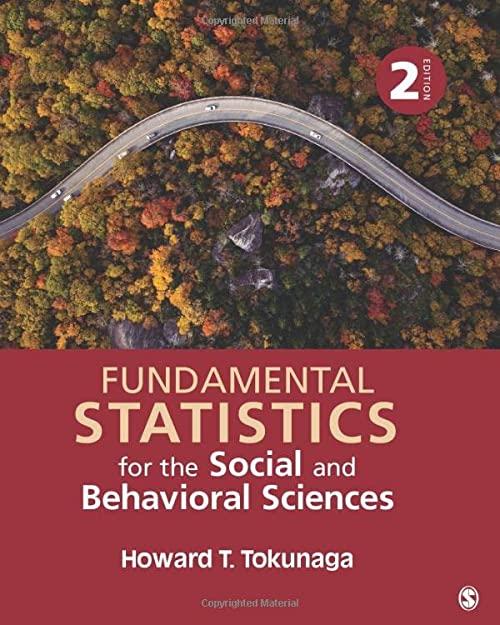Imagine you believe that men and women have different beliefs regarding the average cost of a wedding.
Question:
Imagine you believe that men and women have different beliefs regarding the average cost of a wedding. More specifically, because they are traditionally more involved in the planning of weddings and therefore have a more complete understanding of their costs, you hypothesize that young women will provide a higher estimate of the cost of the average wedding than will men. To test your hypothesis, you ask a sample of college students ( 13 women and 13 men), "How much (in thousands) do you believe the average wedding costs?" The estimates (in thousands of dollars) of these students are below:
Women: \(20,9,14,11,25,18,12,33,24,10,30,14,22\)
Men: \(15,6,19,16,33,4,21,13,10,7,24,5,20\)
a. For each group, calculate the sample size \((N)\), mean \((\bar{X})\), and standard deviation \((s)\).
b. State the null and alternative hypotheses \(\left(\mathrm{H}_{0}\right.\) and \(\left.\mathrm{H}_{1}\right)\).
c. Make a decision about the null hypothesis.
(1) Calculate the degrees of freedom \((d f)\).
(2) Set alpha \((\alpha)\), identify the critical values (draw the distribution), and state a decision rule.
(3) Calculate a value for the \(t\)-test for independent means.
(4) Make a decision whether to reject the null hypothesis.
(5) Determine the level of significance.
d. Draw a conclusion from the analysis.
e. Relate the result of the analysis to the research hypothesis.
Step by Step Answer:

Fundamental Statistics For The Social And Behavioral Sciences
ISBN: 9781506377476
2nd Edition
Authors: Howard T Tokunaga




